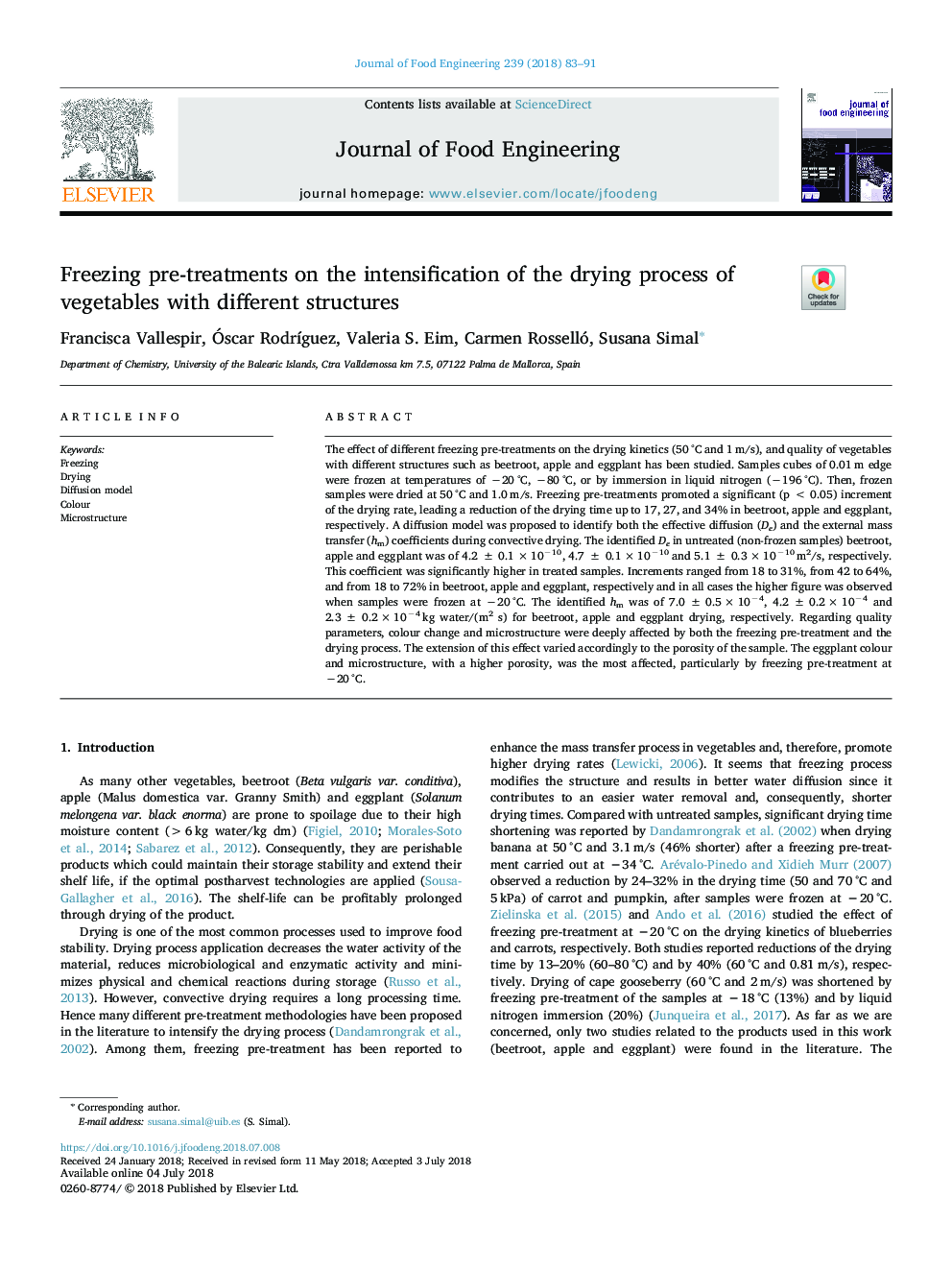| Article ID | Journal | Published Year | Pages | File Type |
|---|---|---|---|---|
| 6664387 | Journal of Food Engineering | 2018 | 9 Pages |
Abstract
The effect of different freezing pre-treatments on the drying kinetics (50â¯Â°C and 1â¯m/s), and quality of vegetables with different structures such as beetroot, apple and eggplant has been studied. Samples cubes of 0.01â¯m edge were frozen at temperatures of â20â¯Â°C, â80â¯Â°C, or by immersion in liquid nitrogen (â196â¯Â°C). Then, frozen samples were dried at 50â¯Â°C and 1.0â¯m/s. Freezing pre-treatments promoted a significant (pâ¯<â¯0.05) increment of the drying rate, leading a reduction of the drying time up to 17, 27, and 34% in beetroot, apple and eggplant, respectively. A diffusion model was proposed to identify both the effective diffusion (De) and the external mass transfer (hm) coefficients during convective drying. The identified De in untreated (non-frozen samples) beetroot, apple and eggplant was of 4.2â¯Â±â¯0.1â¯Ãâ¯10â10, 4.7â¯Â±â¯0.1â¯Ãâ¯10â10 and 5.1â¯Â±â¯0.3â¯Ãâ¯10â10â¯m2/s, respectively. This coefficient was significantly higher in treated samples. Increments ranged from 18 to 31%, from 42 to 64%, and from 18 to 72% in beetroot, apple and eggplant, respectively and in all cases the higher figure was observed when samples were frozen at â20â¯Â°C. The identified hm was of 7.0â¯Â±â¯0.5â¯Ãâ¯10â4, 4.2â¯Â±â¯0.2â¯Ãâ¯10â4 and 2.3â¯Â±â¯0.2â¯Ãâ¯10â4â¯kg water/(m2 s) for beetroot, apple and eggplant drying, respectively. Regarding quality parameters, colour change and microstructure were deeply affected by both the freezing pre-treatment and the drying process. The extension of this effect varied accordingly to the porosity of the sample. The eggplant colour and microstructure, with a higher porosity, was the most affected, particularly by freezing pre-treatment at â20â¯Â°C.
Related Topics
Physical Sciences and Engineering
Chemical Engineering
Chemical Engineering (General)
Authors
Francisca Vallespir, Ãscar RodrÃguez, Valeria S. Eim, Carmen Rosselló, Susana Simal,
